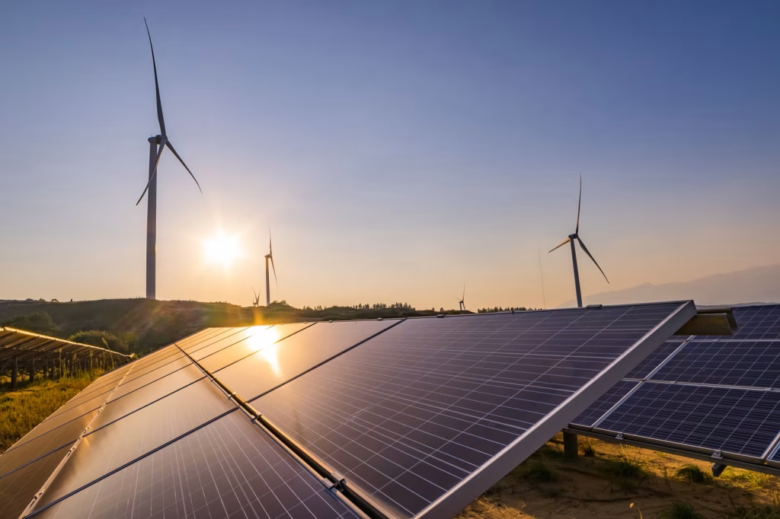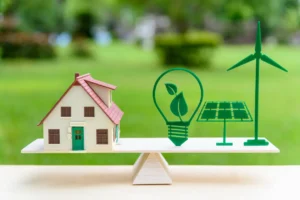As the world strives to reduce its environmental impact, energy efficiency and sustainability have become more important. Smart grids are at the forefront of the evolution, as they represent a revolutionary technology that will transform the way energy is produced, distributed, and consumed. Smart grids combine traditional energy networks and cutting-edge digital communication technologies to create a two-way information flow between utilities, customers, and other stakeholders. This interconnectivity allows for more flexible, dynamic, and efficient energy management. What exactly is it that makes smart grids so important for a future of energy efficiency? Understanding the components, challenges, and benefits of smart grids will help you understand their impact.
The Limitations of Traditional Grids
For more than a century, traditional energy grids have been the foundation of modern electricity networks. Their design is linear and out-of-date, with a primary focus on a single-way energy delivery from generation plants to the consumers. Due to their rigidity, traditional grids are unable to cope with the increasing complexity of today’s energy needs, including renewable energy integration, multiple sources, and changing consumption patterns. Inefficiencies and outages are a common occurrence due to these systems’ inability to intelligently adjust to fluctuations in demand in real-time. The traditional grids lack robust mechanisms to detect and fix system failures quickly, which results in longer outages as well as increased operating costs. The need for a more intelligent system is unavoidable as energy demands become increasingly complex.
Smart Grids: Key components
Smart grids are based on innovative and highly interconnected components that transform the grid into a dynamic system. The heart of smart grids is advanced metering (AMI), sensors, and automated control systems, which enable real-time communication and monitoring. Smart meters play a crucial role in providing consumers with actionable information about their energy consumption while allowing utilities the ability to remotely monitor electricity supply and demand. Distributed energy resources (DERs), energy storage systems, and other components are also crucial. Smart grids intelligently balance energy loads by integrating renewable technologies such as solar and wind power with storage solutions that are efficient. Control centers with machine-learning algorithms continuously analyze data, providing insights for optimizing operations and reducing energy waste.
Smart Grids: Benefits
The transition to smart grids has a number of benefits, both for utilities and consumers. It also helps the environment. Smart grids improve energy efficiency and reduce costs for utilities as well as end users. Power wastage can be minimized and inefficiencies detected in real-time by advanced monitoring systems. Smart grids are also more reliable, as they identify problems before they become serious. This reduces outages and improves system resilience. Smart grids also facilitate the integration of renewable energy on a never-before-seen scale. Smart grids are making clean energy more affordable and feasible. They allow homeowners to feed excess solar power back into the grid while reducing dependence on fossil fuels. Smart grids empower consumers through their real-time energy data and by promoting sustainable practices.
Challenges and Opportunities
Smart grid deployment is not without its challenges, despite its many benefits. Upgrades to existing infrastructure in order to support these advanced technologies require significant investment. This can be a barrier for utilities and regions that are cash-strapped. Cybersecurity is another concern. As digital interconnectivity increases, so does the threat of hackers or system breaches. Robust security measures are therefore essential. Consumer education and adoption is another hurdle. Many users are unaware of the advantages of smart grids, or they’re hesitant to make the switch due to concerns about privacy or lack of clarity. These challenges can also be a catalyst for innovation. The investment in smart energy technology is exploding, and governments around the world are prioritizing this upgrade through grants, tax incentives, and regulatory assistance. Better communication strategies and more user-friendly interfaces can help overcome consumer reluctance to adopt smart grid technologies, accelerating their adoption.
Smart Grids: The Future of Energy
Smart grids are more than an upgrade. They represent a complete transformation in energy infrastructure. They are key players for achieving a sustainable future in energy because of their ability to integrate renewable technologies and adapt to real-time information. Smart grids are being adopted by countries like Germany, China, and the United States. These efforts are supported with robust research and funding initiatives. These grids will also be able to accommodate the growth of electric vehicles, which require a lot of energy to charge. Smart grids have virtually unlimited potential by overcoming initial hurdles, leveraging IoT and artificial intelligence advancements, and overcoming implementation challenges. Smart grids are poised to lower costs, increase efficiency, and create lasting environmental benefits. They set a new standard for energy innovation.
FAQs
1. What is the smart grid?
Smart grids are energy networks that combine digital communication technologies with traditional electrical grids in order to allow a two-way information flow. It allows utilities and consumers to manage energy more efficiently, reliably, and sustainably.
2. What are the benefits of smart grids for consumers?
Smart grids provide real-time feedback on energy consumption, allowing consumers to better manage their own consumption. They can also reduce energy costs and minimize outages while promoting the use of cleaner energies.
3. Smart grids are associated with risks.
Smart grids are not without their challenges. They may be expensive to implement, have cybersecurity issues, or require consumer education. These risks are addressed by technological advances and regulatory support.
4. Can smart grids support renewable energy?
Smart grids can integrate renewable sources of energy like wind and solar. They optimize the distribution of energy loads and give the flexibility to integrate variable energy inputs in the grid.
5. What is the future of smart grids?
Smart grids promise a resilient, sustainable, and highly efficient energy future with the advancements in AI and IoT. These grids are poised to revolutionize the way we produce, distribute, and consume energy worldwide.




